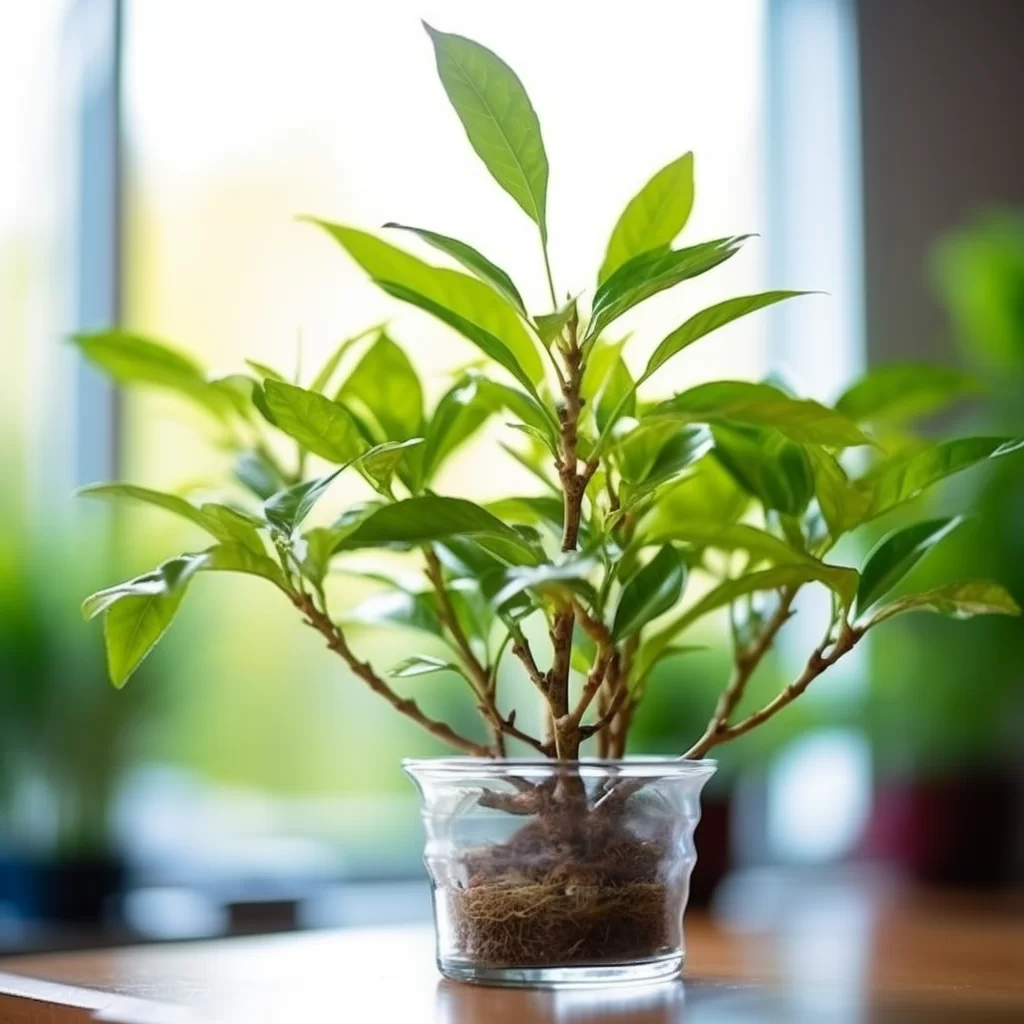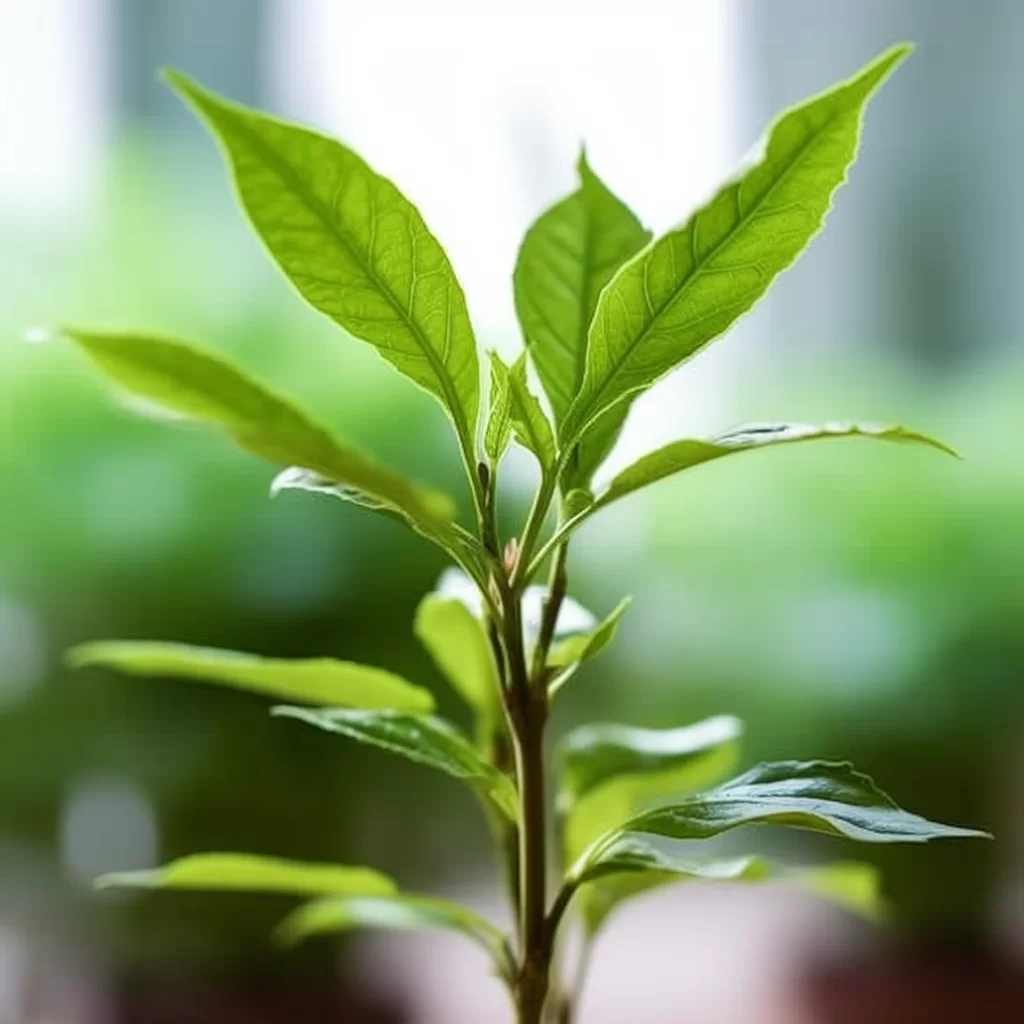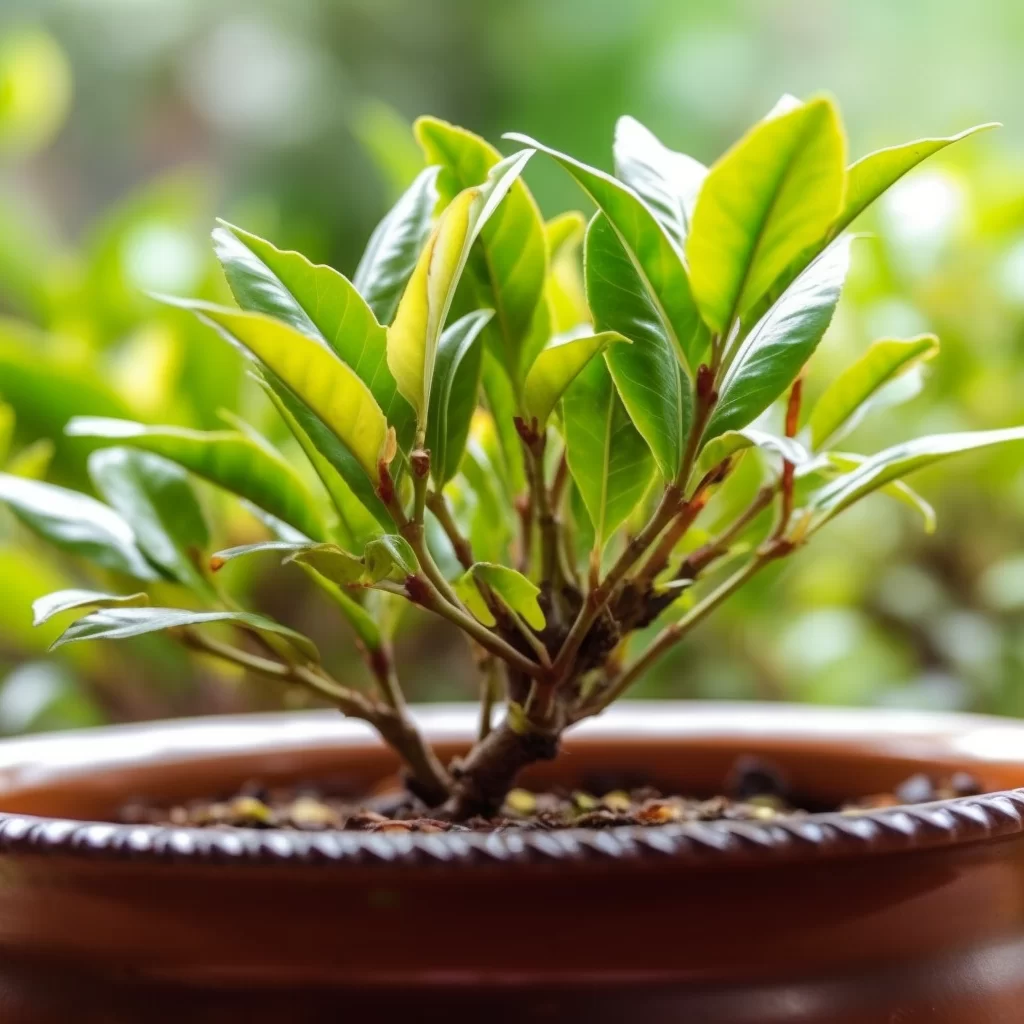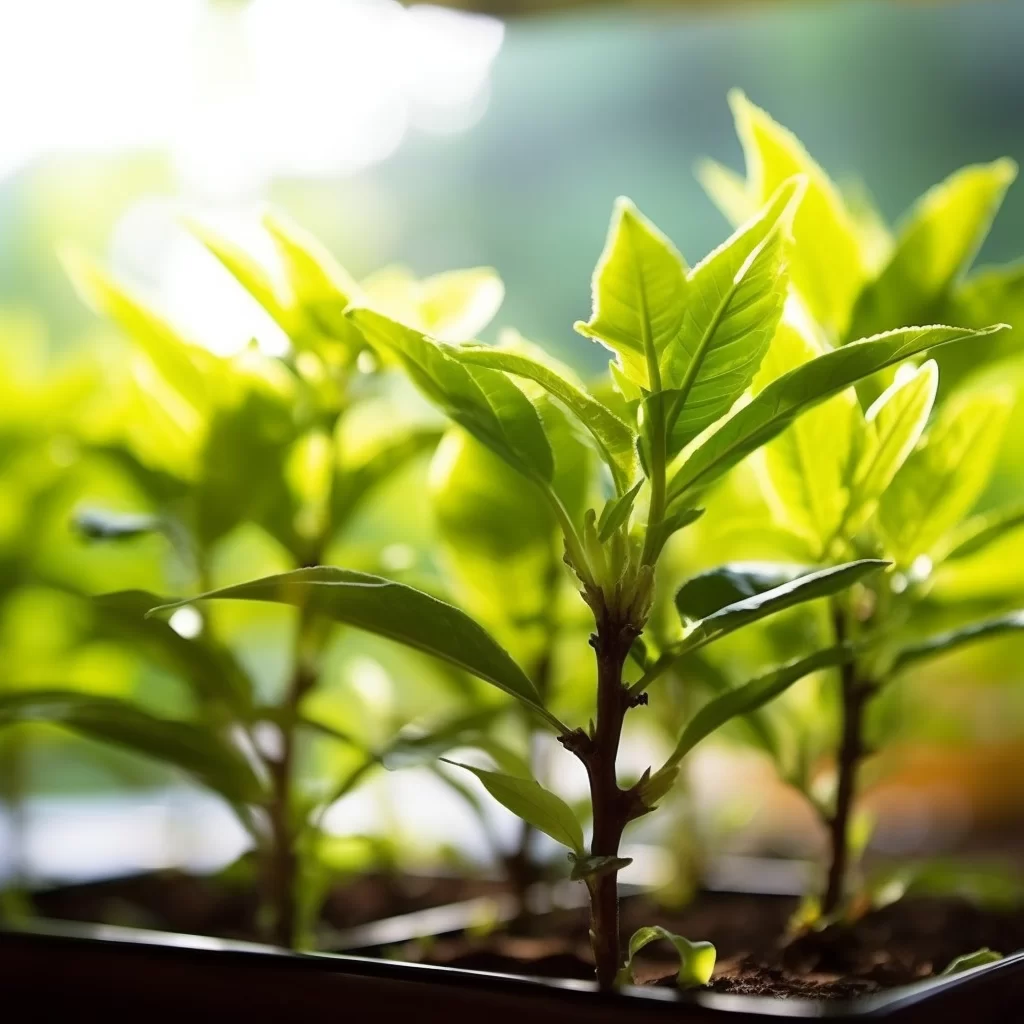Story of Day :
Contents
The Complete Guide to Growing and Caring for Camellia Sinensis Plants
If you’re a tea lover and want to get into growing your own tea plants, the camellia sinensis plant is the perfect choice for you.
This incredible plant is responsible for producing all types of true teas such as black, green, and oolong.
With just a little bit of knowledge and effort, you can grow your own tea leaves right at home! In this article, we’ll guide you through everything that you need to know about cultivating and nurturing camellia sinensis plants.Caring for camellia sinensis plants is easy if done correctly.
It requires some basic gardening skills like choosing the right soil type, providing adequate sunlight exposure along with regular watering and fertilization.
All these factors play an important role in ensuring that your camellia sinensis plant grows healthy leaves which can be harvested to make teas of different varieties.
So why not take up this fascinating hobby by starting with growing your very own tea plants? It’s fun, easy-to-do and could save you money too!
What is Camellia Sinensis?
Camellia sinensis is a fascinating evergreen shrub that originates from China and Southeast Asia.
This plant species is well-known for being the one and only source of true teas, including black tea, green tea, white tea, oolong tea, and pu-erh tea.
These teas are all derived from different parts of the same plant – Camellia sinensis – which undergoes various processing methods to create unique flavors and aromas.
It’s amazing to think that such a small plant can produce such an array of beloved beverages enjoyed by millions worldwide. The versatility of Camellia sinensis in producing different types of teas has led it to become a major global crop with widespread cultivation in various countries.
The versatility of Camellia sinensis in producing different types of teas has led it to become a major global crop with widespread cultivation in various countries.
The demand for its leaves has driven extensive research on its genetics and cultivation practices as well as its potential health benefits.
Indeed, the significance of this humble shrub cannot be overstated in terms of both cultural significance and economic impact worldwide.
So next time you sit down with your favorite cuppa, take a moment to appreciate the wonder that is Camellia sinensis!
The camellia sinensis plant yields a variety of teas that are processed in different ways.
To make black tea, the leaves are fully oxidized, resulting in a strong and robust flavor profile.
In contrast, green teas are not oxidized at all, which gives them a lighter and fresher taste.
If you’re looking for something that’s not too strong or too light, oolong tea is a good option as it falls somewhere in between black and green teas in terms of oxidation.The process of producing each type of tea begins with harvesting the leaves from the camellia sinensis plant.
After this initial step is completed, further processing steps vary depending on the type of tea being produced.
If you prefer your tea to be bold and richly flavored, black tea is fully oxidized to achieve this effect.
On the other hand, if you like your brew to have a more delicate taste profile with subtle notes of floral or grassy flavors then unoxidised green teas may be more suitable for you.
Oolong lies somewhere in between these two extremes with moderate levels of oxidation that produces complex flavours that satisfy lovers experiencing both ends on flavour spectrum while keeping things interesting!
Growing Camellia Sinensis Plants

If you’re lucky enough to reside in a region with a warm climate, then cultivating camellia sinensis plants could prove to be stress-free for you.
These plants thrive in acidic soil that has sufficient drainage and is packed with organic matter.
It’s essential to keep in mind that camellia sinensis plants are picky about their habitat, and growing them successfully requires attention to the soil quality.To ensure your camellia sinensis plants grow well, make sure the environment is suited for them.
The ideal conditions involve fertile soil rich in organic matter that drains well.
With a good understanding of these requirements, growing tea can become an easy task even if it might seem challenging at first glance.
So if you live within zones 8-9 and have been contemplating growing tea in your garden or backyard, now’s the time!
- Choose a sunny location with light shade in hotter climates
- Dig a hole twice as wide as the root ball but only as deep
- Add amendments such as compost or peat moss
- Carefully place your plant into its new home making sure it’s level with surrounding soil
- Firmly pack soil around the roots and water thoroughly
If you’re planning on growing camellia sinensis, it’s important to remember that this plant requires regular watering, especially during its first year of growth.
However, it’s equally important to ensure that you don’t overwater your plant since camellia sinensis doesn’t thrive in soggy soil.
Overwatering can cause root rot and other issues that could harm or even kill your plant.
So make sure to find the right balance between keeping the soil moist and avoiding waterlogging. To maintain a healthy camellia sinensis plant, it’s crucial to pay attention to its water requirements.
To maintain a healthy camellia sinensis plant, it’s crucial to pay attention to its water requirements.
This tea-producing shrub needs consistent watering during its initial stage of development but be cautious as excessive watering can lead to problems.
Overly damp soil can lead to moisture-related issues such as fungal infections or root rot in some cases which are detrimental for the growth of camellia sinensis plants.
It is best practice not only for encouraging healthy foliage development but also for ensuring longevity and good yields is striking an optimal balance between maintaining a fair level of moisture without putting too much stress on the roots by overwatering them with heavy doses regularly – so take care when you’re giving your plant a drink!
Caring for Camellia Sinensis Plants
Camellia sinensis plants, the ones responsible for producing tea leaves, require sunlight for their growth and development.
It is crucial that they receive a minimum of six hours of sunlight daily to ensure optimal health.
However, in hotter climates, these plants prefer morning sun with some shade in the afternoon to prevent damage from excessive heat.The sunlight plays a crucial role in the photosynthesis process that enables these plants to produce their food and grow.
This process converts carbon dioxide and water into glucose while releasing oxygen as a byproduct.
Hence, exposing Camellia sinensis plants to adequate sunlight enables them to thrive and enhance their yield potential while maintaining quality standards.
Therefore, it is essential always to provide them with enough light exposure throughout their growing cycle while ensuring they do not get scorched by direct sun rays during hot afternoons by providing some shade.

If you’re looking to grow a camellia sinensis plant, it’s crucial to keep in mind that fertilization is vital for its growth and health.
These plants require regular feeding with a fertilizer formulated explicitly for plants that thrive in acidic soil.
You can find such fertilizers at a local gardening store or online.
Make sure to follow the instructions provided on the package while applying the fertilizer, as over-fertilizing can lead to negative effects on your plant’s health.Fertilizers are essential for providing necessary nutrients to your camellia sinensis plant, helping it grow faster and produce more tea leaves.
Fertilizing also enhances the quality of these tea leaves by improving their taste and aroma.
It’s important not to forget this aspect of care when growing this unique plant at home or in your garden.
By using an appropriate fertilizer and adhering to instructions provided, you’ll have healthy plants with flourishing growth potential!
If you’re a fan of tea, you’ll be happy to know that proper pruning is essential for the health and growth of camellia sinensis plants.
It’s recommended to prune your plant in late winter or early spring, which is just before new growth appears.
Doing this will encourage your camellia sinensis plant to grow bushy instead of tall leggy stems, which may hinder its productivity.Pruning can seem like a daunting task but it’s vital for healthy plants.
With camellia sinensis plants, pruning at the right time can promote vibrant and lush growth that will result in a higher yield of tea leaves.
So don’t shy away from taking some snips before spring – your cuppa will thank you!
The harvesting process is an essential step in the production of agricultural products such as fruits, vegetables, and grains.
It involves gathering mature crops from the fields and preparing them for transport to processing facilities or markets.
Farmers need to carefully time their harvest to ensure that they obtain the maximum yield while also maintaining optimal quality.Once the crops are harvested, they undergo various post-harvest procedures such as sorting, cleaning, grading, packaging, and storage.
Machinery like combines and threshers have made harvesting easier by increasing efficiency and reducing labor costs.
The widespread use of technology has led to further developments in the industry through methods like precision agriculture that uses sensors to collect data about vegetation growth patterns for better yield optimization.
Indeed, a successful harvest requires efficient coordination between farmers and stakeholders involved in crop production all along the supply chain.
The way tea is harvested depends on the type of tea you want to make.
There are various types of teas, such as black, green, white, and oolong tea, all with distinct characteristics and flavors.
For instance, black tea is made by fermenting the leaves until they turn dark brown or blackish color while green tea is made by simply steaming or pan-frying the fresh leaves to prevent fermentation.
White tea involves plucking only young buds that have yet to open while oolong requires partially fermented leaves that are then rolled into balls before being dried.Regardless of the type of tea being harvested, handpicking is usually preferred over machine harvesting for a higher-quality brew.
The steps involved in handpicking vary among regions and cultures but typically involve carefully selecting only the most tender shoots or buds from mature plants at specific times during their growth stage.
Once picked, the leaves undergo a series of steps including withering where they lose moisture content before being rolled or twisted into shape depending on the desired end product.
The final step involves drying which helps to preserve freshness and flavor for longer periods making them an ideal drink any time of day!
- Black Tea: The leaves are harvested and then withered by being left out in the sun or indoors under artificial light until they’re soft enough to be rolled without breaking.
After rolling they’re left out again until fully oxidized before being fired in an oven or pan-fried over high heat resulting in its characteristic black color and flavor profile.
- Green Tea: The leaves are harvested from young shoots that have only been exposed to a minimal amount of sunlight so chlorophyll has not yet affected their delicate flavors.
Green teas require no oxidation step but must be steamed or pan-fired immediately after harvest before finally drying them through a series of processes involving hot air or vacuum chambers.
This results in their pale green color and delicate flavor profile.
- Oolong Tea: The leaves are harvested and then withered for a shorter period than for black tea before being rolled into tight balls or twisted into strips.
They’re then left to oxidize only partially, so they remain partially green but with edges of yellow-brown coloration giving them their characteristic floral taste.
In Conclusion
If you’re a tea lover, growing your own camellia sinensis plants can be an enjoyable and fulfilling experience.
Not only will you have the satisfaction of caring for a living plant, but you’ll also have access to fresh tea leaves that you can use to brew your own homemade tea.
Our guide provides all the necessary information on how to care for your camellia sinensis plant, so it can thrive and produce high-quality leaves that will result in a delicious cup of tea.Growing camellia sinensis plants requires patience and effort, but the rewards are worth it.
Whether you’re interested in trying new blends or simply want to enjoy the taste of freshly brewed tea from scratch, having your very own plant is both practical and fun.
With our guide, understanding how to properly nurture these plants becomes easy.
You’ll be able to create an environment that encourages growth while also ensuring that your camellia sinensis produces flavorful leaves suitable for brewing into tasty teas with their unique aroma and taste!